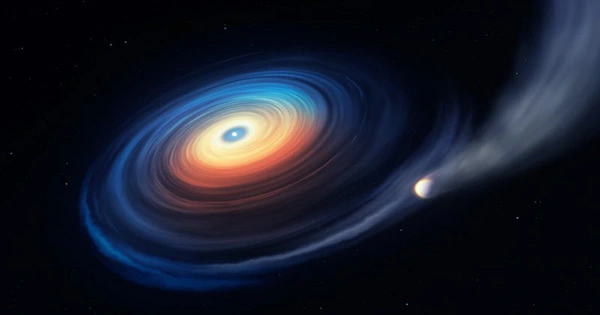Some red giant stars have been thought for a long time that they are losing a lot of mass to their companions, but verifying this has proven difficult. However, a study of red giants captured by the Kepler Space Telescope has identified two separate populations of stars that have lost a significant amount of their material. The researchers discovered a distinguishing trait of such stars in the process, which may make them easier to locate in the future. They’ve also proved Kepler’s versatility by using it for research that goes far beyond its initial purpose. When stars get older, they cool down and blow out, turning becoming red giants.
Despite the fact that each square meter of their surface emits less light than it did when they were younger, these giants are so massive that they represent the brightest moment in their lifetime, unless it becomes a supernova. This makes red giants extremely noticeable from afar. Although just a small percentage of stars are visible, this means we can view a lot of them, as well as have unique possibilities to study stellar evolution and behavior. Red giants in close binary systems, on the other hand, are projected to lose mass to denser neighbors due to their diffuse nature.

Astronomers have been eager to investigate the phenomenon, but have found it difficult to pinpoint instances where it has occurred since stars evolve far too slowly for humans to observe in real time. However, a new paper in Nature Astronomy has uncovered two groups of red giants that have lost a lot of mass. Yaguang Li, a PhD student at the University of Sydney, and co-authors looked through 7,000 red giants that arrived in Kepler’s field of vision when the observatory was seeking for signs of planets partially blocking stars to find these denuded stars.
In a statement, Li remarked, “It’s like finding Waldo.” “In a sea of typical red giants, we were extraordinarily fortunate to find roughly 40 thinner red giants.” One of the populations, known as very low-mass stars, can be characterized by their masses being 0.5-0.7 times that of the Sun. Smaller stars evolve at a much slower rate than larger stars. A star should have taken longer than the age of the universe to reach the red giant phase if its mass was below a specific threshold. Obviously, this is impossible, thus the star must have formerly had the extra material that would have accelerated its early evolution.
During the red giant phase, stars produce an amplified version of the solar wind, which allows them to shed some of their mass on their own. Unless there is outside aid, scientists are convinced that the loss never exceeds 0.1 solar masses for stars of the size analyzed here. Only a thieving companion could explain the condition, whether we can see one or not, according to Li and co-authors, who identified 32 stars that are simply too low mass to have achieved their current state on their alone.
Underluminous stars, the second type, were much more difficult to identify. They aren’t as bright as I had hoped. “They’ve thinned down a little bit, and since they’re smaller, they’re also fainter, so they’re ‘underluminous’ in comparison to typical red giants,” said co-author Dr Simon Murphy of the University of Southern Queensland. To find them, we need to set expectations, which the scientists accomplished by studying the vibrations created by sound waves within stars, which can disclose information about the helium-burning core.
Stars with cores between 1.8 and 3.6 stellar masses have different cores, and Li identified seven stars with cores similar to this, but with masses below the threshold. One of the underluminous stars has a very high lithium content for a red giant, which is good news for those interested in red giant evolution. The authors believe that this will make it easier to identify stars whose outer layers have been stolen by a spouse in the future.
















